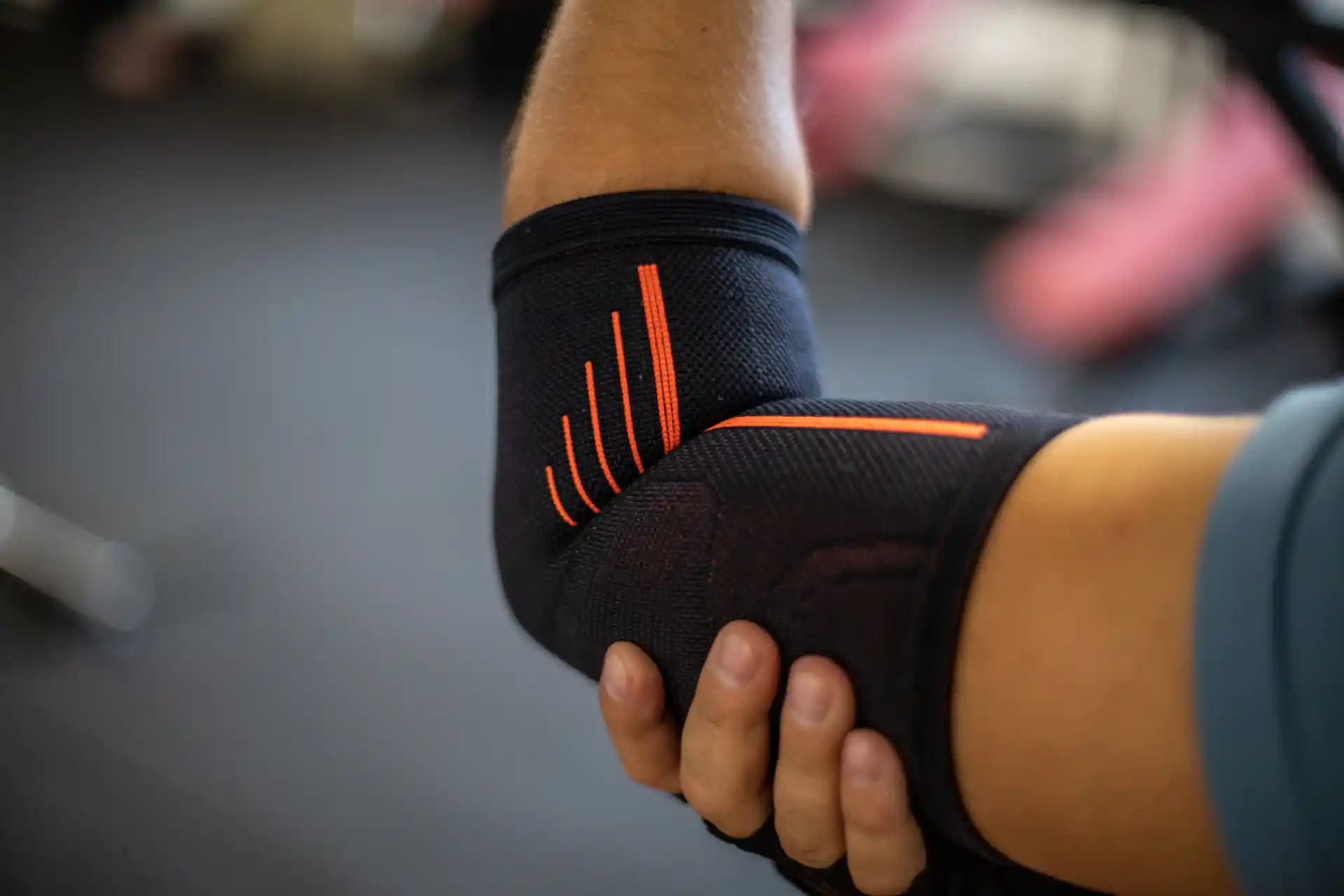Understand Myalgia Basics
Myalgia is a term that describes muscle pain, ranging from mild soreness to intense aches that can slow your daily activities. You may notice this pain in one spot or feel it all over your body.
About 25% of individuals suffer from chronic pain that lasts for three months or more. Chronic discomfort can take a toll on your relationships, productivity, and mental health.
By being proactive, you can make informed decisions about your health, seek the right medical support, and stay on track for steady recovery.
Why Myalgia Matters
Although myalgia often signals a simple issue—like muscle overuse or mild injury—it can also be a sign of bigger health problems. Long-lasting muscle pain can lead to hormonal changes, limited mobility, and even immune system difficulties if ignored.
This is why it is crucial to figure out whether your aches result from a short-term strain or an underlying disease.
Myalgia: Localized vs. Diffuse
You will often hear healthcare providers classify muscle pain in two main categories:
- Localized Myalgia: Pain in a specific muscle group or region, often caused by an injury or strain.
- Diffuse Myalgia: Pain that spreads throughout the body, potentially pointing toward viral infections, chronic conditions, or systemic diseases.
To help you compare these at a glance, here is a quick table:
In some cases, you might notice the pain starting out in a small region and then seeming to spread to nearby areas. This pattern suggests that when one muscle group is compromised, it can overload neighboring muscles, leading to more aches and reduced function.
Early awareness helps you catch these problems before they morph into more persistent pains.
First Signs of Concern
You might experience tightness, cramps, or a dull ache. Sometimes, the pain flares up when you move, while other times it stubbornly remains, even when you rest.
If you notice any fever or rash along with lingering soreness, it is a good idea to seek professional care.
Pay attention if the pain is rapidly getting worse or not improving after a few days of rest. Persistent or severe muscle aches often indicate a more serious root cause.
Recognize Key Causes
Myalgia can begin with a variety of factors—from everyday stress to more complex medical conditions. By taking note of your symptoms and daily activities, you put yourself in a better position to address root causes early on.
Common Triggers
- Exercise or Overuse
Pushing your body too hard during a workout or failing to warm up can cause microscopic tears in muscle fibers, leading to soreness that starts within a day or two. This is often called delayed-onset muscle soreness (DOMS). It usually lessens with rest and gentle movement but can persist or worsen if you keep overexerting yourself. If you suspect that you might be repeating the same tasks endlessly, you could be at risk of a repetitive strain injury. - Stress and Tension
Emotional stress can trigger tightness in your muscles, fueling headaches or persistent back aches. Many people unconsciously tense their shoulders or neck when feeling anxious, which leads to chronic discomfort. Pay attention to posture and incorporate relaxation techniques into your day—small adjustments add up. - Infections and Illnesses
Flu or viral infections often bring about body-wide aches. Muscle pain across multiple areas can signal illness or even side effects from certain medications (Mayo Clinic). When infections persist or return frequently, it can result in longer durations of myalgia. - Injuries
Sprains, strains, and direct trauma can unleash localized muscle pain. Even a small hit to a muscle group can lead to swelling or bruising (sometimes referred to as ecchymosis). If you have had a recent slip, tackled a new exercise routine, or engaged in repeated motions at work, you may have an acute injury leading to myalgia. - Chronic Conditions
Chronic ailments such as fibromyalgia can cause diffuse muscle aches that linger for months or even years. This condition often encompasses fatigue, joint pain, and cognitive difficulties. Studies emphasize how tension, injuries, and even certain drugs can be potent triggers for long-lasting myalgia (Johns Hopkins Medicine).
Read up our articles on post-surgical pain and hypermobile Ehlers-Danlos Syndrome, a rare condition that can lead to myalgia.
When to Seek Professional Care
If your muscle aches do not improve after a few days of rest or if symptoms intensify, it may be time to consult your doctor. Keeping track of where and how the pain occurs can help guide diagnostic tests, such as imaging or blood work, that identify specific issues.
Persistent, unexplained soreness can also hint at more serious conditions, so do not hesitate to ask for a professional opinion.
Try Effective Treatment Options
Adopting a structured approach to manage myalgia can give you both immediate relief and prevent future episodes of muscle pain.
Below are some proven treatment methods and suggestions, from at-home self-care practices to more advanced medical interventions.
Always consult a healthcare professional before starting a new treatment regimen for your muscle conditions.
Home Remedies for Quick Relief
- Rest and Gentle Movement
Taking a day or two off from strenuous activity gives your muscles time to heal. However, too much inactivity can stiffen them further. Aim for a balance by incorporating light stretches or short walks, which help maintain mobility. If you have strained a specific muscle group, you may also want to explore ways to reduce further injury, such as reviewing our guide on how to speed up muscle strain recovery. - Heat and Cold Therapy
Applying ice in the initial phase of an injury (the first 24 to 72 hours) lowers inflammation and eases pain. After that window, mild heat helps increase blood flow and soothes stiff muscles (Johns Hopkins Medicine). Consider using a warm compress or heating pad for up to 15 minutes at a time if the pain persists. - Over-the-Counter Pain Relievers
Non-prescription medications like acetaminophen or ibuprofen often reduce discomfort and swelling. Check the label for dosing instructions to stay safe. If you notice any side effects, it is best to consult your healthcare provider before continuing use. - Massage and Stretching
Research highlights that muscle pain from overuse or fibromyalgia responds especially well to gentle massage and regular stretching exercises (Johns Hopkins Medicine). Even a light self-massage around tight spots can relieve tension. Good news—this is easier than you might think. Small circular motions or guided foam rolling can loosen muscles and help you relax. - Hydration, Nutrition, and Restful Sleep
Water and a balanced diet amplify your muscle function, while proper sleep aids tissue repair. If your pain is ongoing, consider extra steps such as reducing caffeine intake before bedtime or scheduling consistent sleep-wake times.
Medical Intervention
- Physical Therapy
A licensed physical therapist can design personalized exercises that align with your needs. Whether you suffer from recurring muscle strains or stiffness due to a desk job, a targeted program can enhance range of motion and breathing techniques, potentially preventing related problems like muscle spasms. - Prescription Medications
If over-the-counter options are inadequate, your doctor may prescribe stronger anti-inflammatory medications or muscle relaxants. For conditions like fibromyalgia, certain antidepressants or anticonvulsants can also reduce pain signals. Consult with your healthcare provider to weigh the pros and cons. - Injections and Procedures
Corticosteroid injections may help calm inflammation for more severe muscle injuries. Other treatments, such as dry needling or ultrasound-guided muscle therapy, could ease chronic discomfort. If you struggle with repeated injuries, you might explore ultrasound for muscle injury as a healing-support method. - Comprehensive Pain Management
For stubborn cases of chronic muscle pain, some facilities offer multidisciplinary programs that include counseling, stress management, and lifestyle coaching. A 2022 review noted that combining physical treatments with mental health support can yield longer-lasting benefits in pain reduction.
Maintain A Pain-Free Lifestyle
After you have alleviated the worst of your muscle pain, your next step is to prevent recurrences and promote ongoing health.
By refining your movements, daily habits, and stress levels, you set yourself on a path to lasting relief.
Build Protective Habits
- Practice Safe Exercise
Whether you prefer weightlifting or running, focus on proper form and pacing. Alternate between high-intensity activities and rest or low-impact days to let your muscles recover. This is especially vital if you participate in sports that carry a higher risk of muscle tears. If you do experience sudden pain in an area like your calf, you may want to read more about calf strain for targeted solutions. - Address Posture and Ergonomics
Desk work combines with poor posture to create back, neck, and shoulder pain. Invest time in adjusting your chair height, screen distance, and keyboard position. Standing desks or periodic breaks for stretching can help you avoid developing chronic aches. - Monitor Overtraining
Feeling extra tired, dealing with lingering muscle soreness, or struggling to concentrate can signal you are overdoing it. You might be inching toward overtraining syndrome. Tracking your workouts and rest days helps ensure you give your muscles and mind adequate recovery time.
Reduce Stress and Tension
Myalgia severity often escalates with emotional or psychological strain. If you frequently experience high stress, you might add short meditation or breathing exercises to your routine. Some individuals find journaling or gentle yoga beneficial. By managing tension, you also lower your odds of stress-related flare-ups.
Recognize Warning Signs Early
- Pain that does not subside after several days of rest
- High fever or swelling around the sore muscle
- Sudden loss of mobility or function in a limb
- Noticeable weakness when performing daily tasks
If any of these red flags come up, it is wise to call your doctor. Early intervention can keep minor muscle problems from evolving into serious complications..
Conclusion And Next Step
Myalgia, or muscle pain, can keep you from work, hobbies, and everyday tasks—but it is rarely unbeatable.
Consistent habits, from thoughtful exercise plans to mindfulness, also protect you against future pain episodes.
Here’s a quick recap:
- Recognize if your pain is localized (from an injury) or diffused (possibly from an illness).
- Try simple fixes like rest, ice or heat, gentle therapy, and any over-the-counter pain relievers.
- Seek professional attention when the pain is intense, unexplained, or not improving.
- Maintain a healthy routine—balanced workouts, stress reduction, and good posture—to keep muscle issues at bay.
Over time, these strategies will help you reclaim comfort and mobility. If muscle pain ever returns, remember that catching it early can spare you from more severe complications.
With patience and a toolkit of effective treatments, you can stay proactive and enjoy a life free from the burden of prolonged aches.
Seek RELIEF®
RELIEF® is an evidence-backed treatment that targets dysfunctional fascia—the connective tissue that surrounds and supports muscles. When fascia becomes tight or adhered after injury, it can restrict movement, cause pain, and slow recovery.1,2
Using a minimally invasive hydrodissection technique, RELIEF® gently separates and releases adhered fascia and may help restore healthy tissue mobility and improve muscle recovery—without the need for steroids, surgery, anesthesia, or extended downtime.3,4,5
If you’re in the Miami area and recovering from a muscle injury, contact us today to schedule a consultation and learn how RELIEF® can help restore your mobility and comfort.

.webp)


.webp)

.svg)